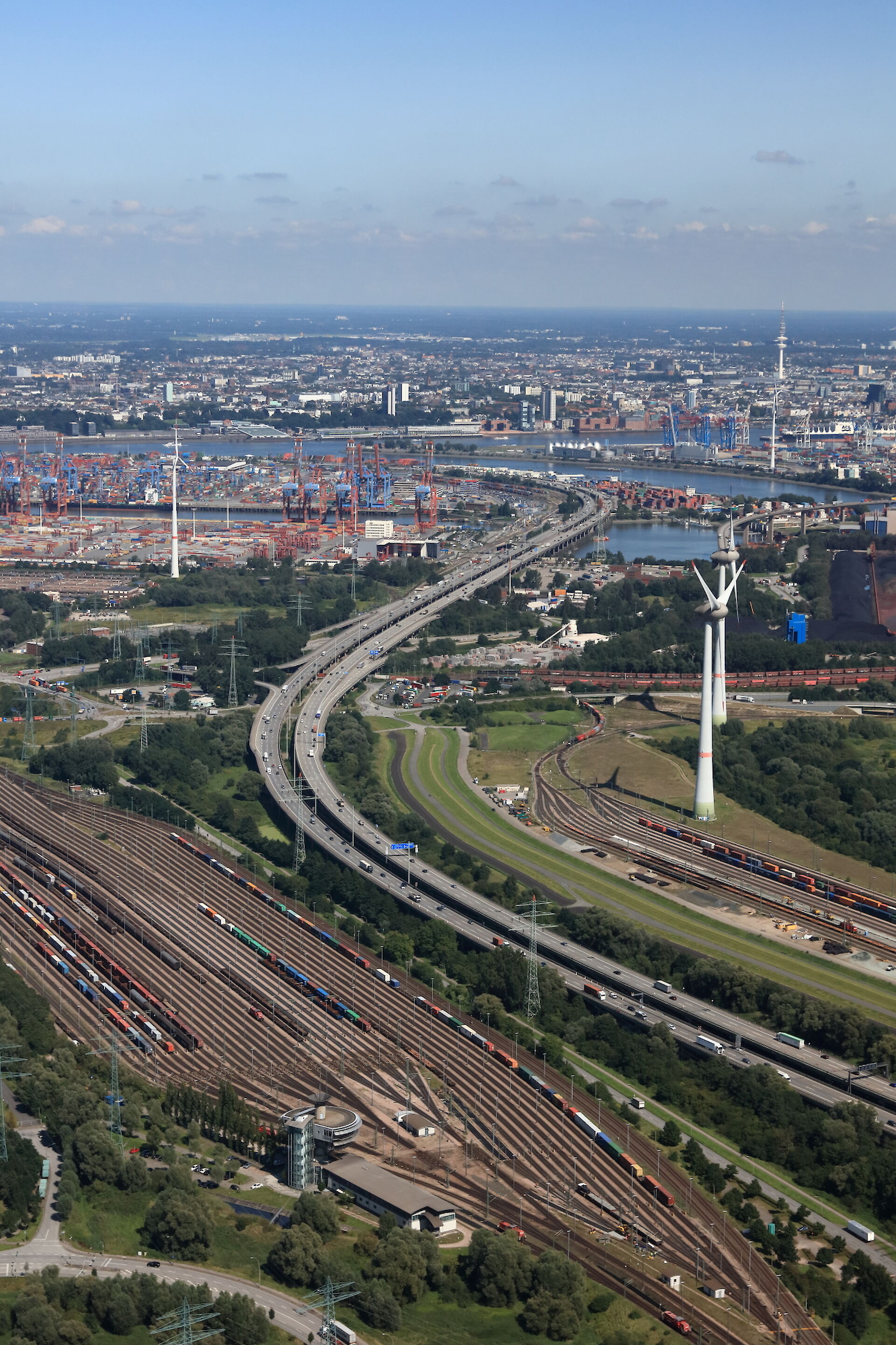18 May 2018 09:35
Economy
This year’s first-quarter throughput total was notable for a rise in conventional general cargoes, a lower figure of bulk cargoes, a stable trend in container handling and distinct growth on container transport services by rail.
In the first quarter of 2018, the Port of Hamburg achieved total throughput of 32.7 million tons (down 7.5 percent). In Hamburg this heading covers general cargo throughput of 22.7 million tons (down 1.8 percent) and bulk cargo throughput of 10.0 million tons (down 18.2 percent). In the bulk cargo throughput segment, it was impossible to match the fresh record throughput total of 12.2 million tons achieved in the first quarter of 2017, with markets causing downturns in all three sub-segments: suction, grab and liquid cargoes. On the import side, general cargo handling at 11.5 million tons was ahead by 3.1 percent. At 11.2 million tons (- 6.3 percent), exports were somewhat weaker. The trend on conventional general cargo throughput proved highly satisfactory. Totalling 370,000 tons, first-quarter throughput here rose by 14.3 percent, maintaining the upward trend started in the fourth quarter of 2017. Container handling in the first quarter of 2018 remained stable at 2.2 million TEU (down 1.9 percent), only just below the comparable figure for the previous year. At 612,000 TEU, container transport by rail achieved a notable advance of 4.1 percent. Hamburg extended its leading position as Europe’s largest rail port.
At 1.9 million TEU (up 0.7 percent), the first-quarter trend for total seaborne container throughput of loaded boxes in Hamburg was once again positive. By contrast, handling of empty boxes was again lower. First-quarter throughput of these in Hamburg totalled 252,000 TEU, a downturn of 18.0 percent. “A glance at handling trends for first-quarter handling of loaded and empty containers indicates that on the one hand, the Port of Hamburg still continues to gain cargoes, but on the other has to accept a sharp drop in the volume of empty containers. Against the background of the not yet implemented adjustment of the fairway of the Lower and Outer Elbe, shipowners are primarily using their slot capacities on ULCVs calling at Hamburg for loaded boxes. With general cargo volume almost equally balanced between import and export tonnage, Hamburg is extremely attractive for shipowners aiming for optimal utilization of their vessels. Whether for import or export, a mass of cargo beckons in Germany’s largest port. By contrast with loaded boxes, empty ones are less port-related and routing these is therefore a more volatile process,” explains Axel Mattern, Joint CEO of Port of Hamburg Marketing.
On the main sea trade routes, Hamburg’s container services with North America East Coast, Eastern Europe (Baltic) and India/Pakistan are still subject to downturns. Among the trades where container services performed distinctly better than in the first three months of the previous year were East Asia (North), South America East Coast, North America West Coast, and North East & West Africa. “China is by a wide margin the Port of Hamburg’s most important trading partner. We can report a distinct advance of 4.5 percent in container traffic with the Peoples’ Republic. Substantial growth also occurred on container services with Brazil (up 37.7 percent), Sweden (up 38.5 percent) and Israel (up 63.8 percent). New or expanded liner services between Hamburg and these countries are one reason for the positive trend,” said Ingo Egloff, Joint CEO of Port of Hamburg Marketing.
Preliminary data indicate an upswing in first-quarter transhipment services by feedership in Hamburg. At 829,000 TEU, the figure for transhipment boxes handled in Hamburg was down by 3.6 percent on the first quarter of 2017. Of this fall, 94 percent was attributable to empty box handling. The landside seaport-hinterland traffic achieved a stable result of 1.3 million TEU in the first quarter. Container transport by rail made excellent progress. In the first three months 612,000 TEU were transported on Port of Hamburg rail services. This represented an advance of 4.1 percent, underlining Hamburg’s leadership as Europe’s No. 1 rail port. Around 13 percent of all German rail freight traffic starts or ends in the Port of Hamburg. Offering 2100 container train services per week, Hamburg is extremely well connected with all Germany’s most economically active regions, as well as those elsewhere in Europe and China.

